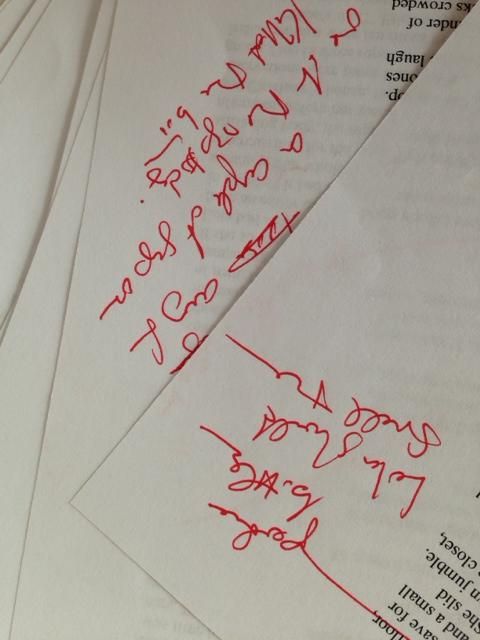Actually, I haven’t even gotten to the delicious point of proofing. That would mean Novel No. 2 is done but for the literal dotting of i’s and crossing of t’s. It has, however, gone through another draft, which means it’s time to print it out and take a good hard look at what’s wrong.
 Halfway through that look, a lot is wrong! I make changes on a hard copy with a red pen, and it looks as though someone has committed murder on my manuscript. Although, to be more accurate, I’d have to say it looks as though someone is performing lifesaving surgery, because that’s what rewriting is.
Halfway through that look, a lot is wrong! I make changes on a hard copy with a red pen, and it looks as though someone has committed murder on my manuscript. Although, to be more accurate, I’d have to say it looks as though someone is performing lifesaving surgery, because that’s what rewriting is.
All of which speaks to the fact that a hard copy is an invaluable tool. You catch so much more on the printed page than on a computer screen. And – this is an inviolable rule for me – you catch still more when reading it aloud. That’ll be one of the final steps, and I’m a long way from there. But it’s the best way I know to catch sentences that stumble and go clunk.
And, I found this good tip, from an old post on DailyWritingTips.com:
For proofreading (i.e. basic spell-checking in context), read backwards (i.e. from the bottom of the page upwards). Since the words come in an unfamiliar and unnatural order, you are more likely to find mistakes than if you read forwards and read what you expect to see, instead of what’s already there.
I haven’t tried it yet, but it makes eminent good sense.


When I proofed at a textbook publisher, we always did final read backward. It works, since the flow of meaning doesn’t cause distractions.